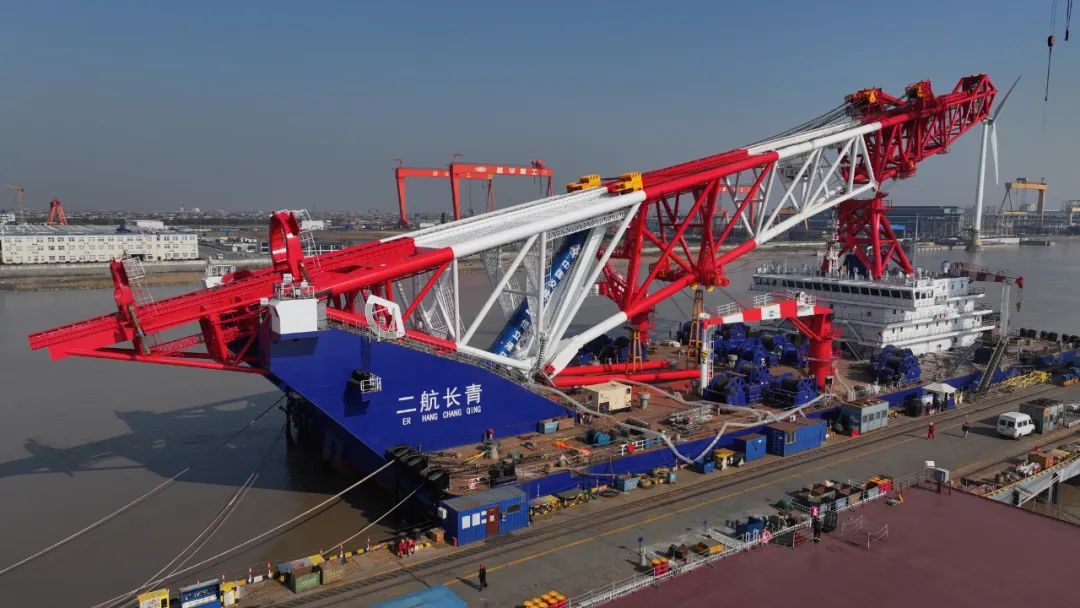
The Erhang Changqing pile-driving barge
China's shipbuilding industry marked a milestone on Sunday as the world's largest pile-driving barge, Erhang Changqing, was delivered in Qidong, East China's Jiangsu Province. The event highlights the country's latest breakthrough in shipbuilding.
Built by Shanghai Zhenhua Heavy Industries (ZPMC), the vessel is 130.5 meters long, 40.8 meters wide and 8.4 meters deep. Its hydraulic cylinder, developed domestically, generates a thrust of 5,000 metric tons, making it the most powerful vessel of its kind in the world.
The Erhang Changqing can drive piles weighing up to 700 tons with diameters of up to 7 meters. Its advanced pile-driving positioning system, which leverages offshore satellite differential technology, ensures centimeter-level precision in deep-sea pile installation, according to the website of Nantong city, where the shipyard is located.
The vessel is expected to play a crucial role in the construction of large-scale ports, cross-sea bridges and offshore wind power projects. It will provide significant support for China's deep-sea water exploration and the development of offshore wind power, CCTV news reported on Sunday.
Over recent years, China has made notable achievements in shipbuilding. The delivery of Erhang Changqing underscores ZPMC's leadership in the field, Wu Minghua, a veteran shipping analyst, told the Global Times on Sunday.
China has surpassed many traditional shipbuilding nations in efficiency and technology, Wu said, adding that recent achievements include the delivery of multiple 24,000 20-foot equivalent class container ships, solidifying China's dominance in high-value and high-tech ship manufacturing.
China's shipbuilding industry has made strides in making high value-added ships, especially in LNG carriers and large cruise ships, Zheng Ping, chief analyst at industry portal Chineseport.cn, told the Global Times on Sunday.
China is now at the forefront of global shipbuilding, and its order books are growing rapidly. The country has also made progress in meeting diverse customer demands, advancing green technologies and achieving parity with global standards, according to Zheng.
Shipbuilding and offshore equipment play a crucial role in China's high-tech manufacturing sector. In December 2024, the Ministry of Industry and Information Technology added shipbuilding and marine engineering clusters in Shanghai, Qingdao, Yantai and Weihai to the national list of advanced manufacturing clusters.
The progress of China's shipbuilding industry has also helped the country better fulfill both domestic and international trade orders as well as provide maritime transportation, Wu added.
From January to November 2024, China's ports handled 16.04 billion tons of cargo, and the full-year throughput is expected to reach 17.5 billion tons, representing a year-on-year rise of about 3.4 percent. The significant increase in port throughput reflects the high level of activity in China's foreign trade. During the same period, China's container throughput reached 300 million standard containers, an increase of 7.3 percent year-on-year, Li Yang, vice minister of Transport, said at a press conference on December 27.



